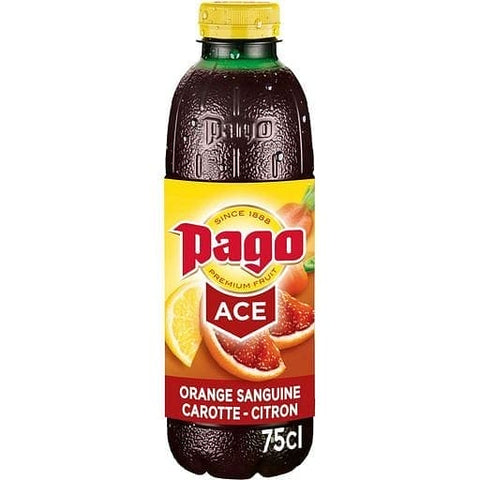Every "Hostess with the Mostest" understands how well a fantastic cheese board may compliment a small dinner gathering. We don't think there's a single person on the earth who doesn't like cheese. It's the simplest appetizer to create, with a beautiful display of cheeses and the perfect accompaniments. Spend less time in the kitchen and more time engaging in conversation with your visitors.
If you've ever stood in a supermarket's cheese aisle, you know how tough it is to put together a tasty cheese board. There are hundreds of different types of cheese from around the world, and some of the best are thought to stink!
Are you prepared to dazzle your guests with the most amazing cheese board you've ever seen? This is a step-by-step tutorial for assembling a cheese board. All of your cheese and meat questions will be answered, as well as what else goes on a cheese board, how much you'll need, and how to put it all together for a stunning cheese board every time! Make it a point to read over all of the hints and suggestions.
It's never a terrible idea to make a party snack with ready-to-eat store-bought items. Guests will be as delighted by it as they would be by a large home-cooked meal, especially if it is followed by a fantastic cheese board that is as friendly and homey as it is. Still, determining what to put on a cheese board may be difficult, so I've put up a simple guide to help you out. You might loosely follow it, but you must make it your own!
What goes on a Cheese Board?
Choose a serving dish that can accommodate all of your cheeses. A marble plate is a great accent for cocktail and dinner gatherings. Wooden boards are ideal for a casual gathering because they are simple to cut and aesthetically pleasing. The three primary components of the ideal cheese board are cheese, meats, and accompaniments. Finally, there's a wonderful surprise element...
1- Cheese. What kind and how much? Consider the possibilities. On your cheese board, including at least four distinct cheeses from each of the three categories: firm, soft, and semi-soft. Remember to begin with your personal favorites. On my cheese board, for example, I have two firm kinds of cheese that I enjoy. Both have their distinct flavor. I like to dress up my brie with nuts and jam when I'm feeling fancy, as in this baked brie recipe.
Then I added some of my other favorites, such as Greek feta with crushed pepper flakes and a couple of slices of different cheddar cheese. When choosing which cheeses to include on your cheese platter, keep the following forms in mind: square, rounds, triangle, and sliced. As a result, your cheese board will be more intriguing.
How much cheese is provided per person on average?
If serving as an appetizer, 1 ounce of cheese per person is plenty. If the cheese board is a major attraction, I'd suggest 2 ounces for each person. Always keep a sufficient supply on hand in case the board needs to be replenished. With a bottle of French wine and some cheese, let's toast the approach of winter. So, what are your thoughts? Let's begin with the cheeses.
Hard cheese: I use two hard pieces of cheese, Comté, and Mimolette. A Beaufort or French Gruyere is another possibility (traditionally a Swiss Cheese)
Soft cheese: I use Camembert and Saint André soft cheeses. You can also use Brie, Port Salut, or Munster, which are similar to Camembert but less robust.
Semi-soft cheese: The languages Morbier and P'tit Basque were utilized. Morbier is an ivory-colored semi-soft cow's milk cheese with a thin black layer running horizontally across the middle and a flexible, slightly elastic texture. P'tit Basque is a pasteurized sheep's milk cheese with a 70-day aging period.
Plain goat cheese: This is a typical fresh Chevre from Poitou Charentes made with just the freshest goat's milk. This wine goes well with wines from Bordeaux and Beaujolais (both featured below). This is a great complement to any of your dishes:
- Salads,
- Steak,
- Soups or
- Crackers, a baguette, sourdough bread, or a combination of the two.
- Fresh or melted.
It was best served with fig jam and honey on rustic sourdough bread, according to my wife. This was my first time trying this pairing, and I must say, it was fantastic...
Blue cheese: A one-of-a-kind blue cheese with a buttery finish and high butterfat content (double crème). Blue cheese, which has a dry texture, is often made from goat's milk. In contrast, blue cheese is prepared using cow's milk and has a considerably creamier texture.
This cheese is great in
- Salads
- Over steak and potatoes
- On pizza
- Naked, on a cheeseboard
Perfect with
- Pears
- Bacon or pancetta
- A fresh baguette or sourdough bread is offered with the soup.
- Try George Duboeuf Beaujolais-Villages 2015, Cote du Rhone, or a bolder wine like Cabernet Sauvignon for a great complement.
- With a slice of grilled pancetta and fresh fig, it was fantastic.
Brie: Made with fresh, freshly collected cow's milk from the Normandy region, this double crème Brie has a rich, creamy flavor.
- Arrange apple slices, cherries, figs, or preserves on a fruit dish.
- Before serving, toss with crackers or a baguette.
- Serve alongside a salad or on top of a burger.
- Baked Brie en Croute (amazing little bite appetizer with raspberries and walnuts).
- White wines such as chardonnay and sauvignon blanc pair well with it (Légende Blanche), Georges Duboeuf Pouilly-Fuisse 2015 or Champagne
Saint Andre has a unique texture that complements both sweet and savory dishes, as well as a distinct flavor that is appropriate for every occasion. The "exquisite cheese," Saint André®, is as creamy as butter. This was a resounding victory for me. This will be my first choice on any cheese board, not just the French one, going forward.
It goes well with
- White wines from Georges Duboeuf Pouilly-Fuisse Legende Blanc and Georges Duboeuf Pouilly-Fuisse 2015
- Champagne
- Cheeseboards with Fruits like figs and berries
- Crackers, bread, baguette
- Fruit and nut platters with cheese
- Berries and fruits such as figs and grapes
- Baguette, crackers, and bread-It go well with gingerbread and chocolate, too.

2- Meats are the second thing I think about when putting together a cheese board:
My menu has three to four different types of Italian cured meats regularly. Although some items are more expensive than others, the deli section of your local grocery store should have all you need. Start with your most cherished possessions and work your way up. Prosciutto di Parma and any form of salami are must-haves for me. Daily, how much meat is consumed on average? Although there is no hard and fast rule, 1 to 2 ounces of beef should be enough for each person.
3- Accompaniments:
I don't think of accompaniments as just fillers. They're a great way to spice up your cheese board and give a touch of class. Plus, you can put a lot of what you already have to good use! Of course, bread and crackers will be available. Other cheese board accompaniments I have include fresh, sweet, salty, and sour.
-Fresh: For me, fresh fruits and vegetables are essential since they assist to balance my diet while also cleansing my palate. When it comes to how many vegetables and fruits to include, there are no hard and fast rules, but I aim to include at least one of each. Sliced cucumbers and pears, which were in season at the time, were on this cheese board. Grapes are another fruit that I frequently use.
-Sweet: With all of the cheeses and cured meats on the board, something sweet is a must. I prefer to add dried fruit to honey or jam, such as apricots or figs. Lavender is a wonderful way to conjure up images of the countryside in France. On top of the chèvre, I used lavender honey, but any lavender honey would work well on this board.
-Salty and Tangy: Even if there is enough salt on the board, a handful of almonds could be added for crunch. I'm seeking something zesty, so a small plate of favorite olives or marinated artichokes is a must at this point.
-French Cornichons: These are small pickles that may be found on almost every cheese dish I make. They're acidic and crunchy, and they're delicious with cheese. They have a rough texture and are around the size of your pinky finger.
Radishes, French Butter, and Sea Salt: I'll be honest; I'm not a huge fan of radishes. Until they're dipped in creamy French butter and seasoned with salt, that is. Until I had this classic French starter, I had no idea what I'd been missing. Even better, spread butter, salt, and radish slices on a slice of baguette. YUM
Surprise Elements: I enjoy taking a step back and inspecting my cheese board. "What more do I have on hand that could be interesting to add?" you might wonder. A bowl of creamy homemade hummus during a cheese board, or a small bowl of excellent extra virgin olive oil for dipping a warm piece of bread, may not seem like a natural choice for a cheeseboard.
How to Assemble a Cheese Platter
So now you know what to serve with your cheese platter. But how do you put it all together in a way that's both engaging and attractive? Don't get too worked up about the cheese board things you choose; just be mindful! Have a good time! Don't be scared to use your imagination while placing items on the board. Both a smaller and more basic cheese board and a larger cheese board are possible possibilities. I prefer a larger, cornucopia look when entertaining a large party.
1- First, you'll need a huge board. Slate or stone boards could also be used. If everything else fails, a huge platter can be used (like I do when serving mezze.)
2- Make an anchor in the middle of your board to start adding things. In this case, a bowl of hummus in the middle served as my anchor. After then, think of something to put in each of your board's four corners. Four types of cheese surround my home: brie, old cheddar, olives, and feta.
Simply use the prepared meats, cheeses, and accompaniments to fill in the gaps left by the meats, remaining cheeses, and accompaniments. Take a step back and assess whether you require more of each (for that fuller look).
3- Complete the project by adding the finishing touches. Take a step back and assess the situation to see if any holes need to be addressed. The board is livened up with a garnish of fresh herbs. Here are some springs of dill and rosemary. The rosemary's piney scent brought just the proper amount of holiday cheer!
How Far In Advance Should One Prepare this Cheese Board?
Last but not least, keep in mind that cheese tastes considerably better when served at room temperature. Remove the cheese from the refrigerator at least 1 hour before serving (but don't unwrap it yet to avoid it drying out.) The aromatics and subtle scents of cheese are much more noticeable when served at room temperature. That is a significant improvement.
It takes me roughly an hour to make this cheese board. I begin by removing the cheeses from their packaging and allowing them to rest while I gather the additional ingredients. And I'll begin assembling the board about 30 minutes before visitors arrive, which means the cheeses will have been out of the fridge for about an hour. Ten to twenty minutes before serving, add the meats.
Serving Tips
- Arrange the cheeses in ascending strength order, beginning with the mildest and progressing to the most potent. To prevent overpowering delicate cheeses, serve a strong cheese on its dish.
- For each type of cheese, especially soft cheeses, set aside a knife. A paring knife may be required for firm cheese, while a cheese plane may be required for aged cheese. Firm cheese may require the use of a paring knife, but soft cheese can be spread easily with a butter knife.
- Make a label for each cheese so you don't have to keep repeating the names. Make a list of poetic words for each flavor if you wish to be more detailed.
- Serve your visitors with small plates and nice napkins.
- Finally, offer a selection of wines that complement the cheese you're offering. Because the possibilities for wine-cheese pairings seem limitless, a new blog article would almost certainly be necessary. For the time being, we'll just put a cork in it. However, we recommend that you have a look.




